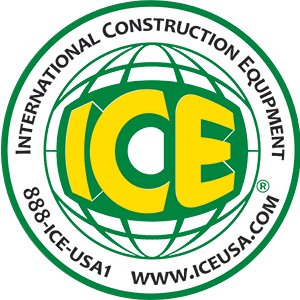America’s New Space Bridge
February 14, 2024
America's New Space Bridge
Edited by Alan Zimmerman & Debbie Reaney
The Robert F Kennedy Space Center is one of the most visited tourist attractions in Florida. Located on Merrit Island, the space has about 700 facilities and buildings grouped throughout the center's 140,000 acres (about half the area of San Antonio, Texas). NASA began acquiring land in 1962, buying up over 131 square miles (about the area of Athens, Georgia) of land and resources to start space programs that are forever known in American History. The Apollo program, Artemis Program, and the Space Shuttle design are just a few of the more well-known projects. To access the space center from the mainland, visitors must travel across the NASA Causeway Bridge. However, it has been in serious need of repair and an urgency to replace the aging, low-level bascule bridges and drawbridge accelerated after a 2017 NASA engineering study warned they could become too unsafe to support heavy spacecraft and freight loads. It is now being replaced and receiving a fresh look. This project will support future growth and improve public and commercial mobility access to Kennedy Space Center.
Heavy civil, marine and industrial contractor Orion Marine Construction, Inc., headquartered in Houston, Texas, was awarded the $126-million-dollar NASA Causeway Bridge Replacement Project which provides the primary roadway access to the Kennedy Space Center, Space X, and Blue Origin. The final bridge layout will be twin 4,025′ (ft) (1,230 m) long, high-level spans over the Intercoastal Waterway, replacing the twin bascule bridges built in 1964. Working together with the Engineers at NASA, the team collaborated to build the new bridge and completed the first eastbound bridge early which allowed for easier movement of spacecraft flight hardware to the Kennedy Space Center and the Cape Canaveral Space Force Station, as well as unobstructed boating on the Indian River. The new bridges have 3% approach grades, leading to the main channel span, rather than the traditional 5 percent to 7 percent grade. This was done to accommodate transportation of heavy spacecraft flight hardware more easily across the bridge to Kennedy Space Center. During critical launches, construction temporarily shuts down to allow physical security operations to support public attendance and local viewing. In October 2023 during the Falcon Heavy launch, the team lost two days, since severe weather delayed the launch. Additionally, some excavation is prohibited during launches to ensure critical communication lines are not cut. Despite those challenges, the first bridge opened 125 days (about 4 months) ahead of the original schedule in June 2023.
To replace the old bridge, its foundation first had to be removed requiring Orion to remove the steel piles from the bedrock. This was accomplished using two rented ICE® 44E Vibratory Hammers fitted with specialty ICE ® clamp fittings. They will complete the same process when inserting the steel piles for the new causeway, providing a modern transportation link built for today's space industry and its workforce.
Both bridges are scheduled to be completed by early 2026 and International Construction Equipment (ICE®) is extremely proud to be working with a legacy customer like Orion Marine Construction, Inc. once again. Brilliant job, Orion! Your attention to detail and dedication to assuring a safe foundation for our country's space program is certain to launch us into the future.
Learn more about the ICE® 44E
Media Contact-
Pollyanna Cunningham, MA, MBA
Vice President Marketing, Brand and Media Relations
Vice President IT and IT Comm
ICE® - International Construction Equipment, Inc
Office - 704-821-8200
Email - marketing@iceusa.com


